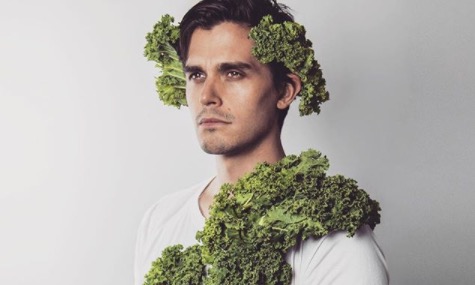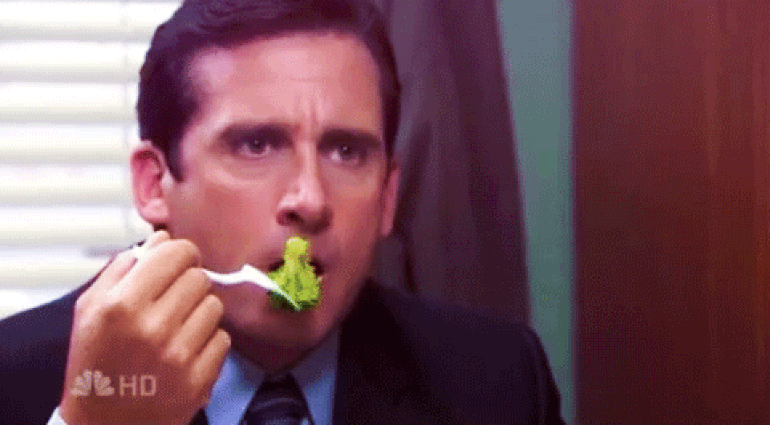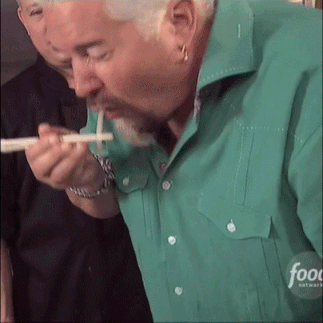
They say you should never discuss religion or politics at the dinner table.
In 2018 though, there’s a topic that’s potentially even more hazardous, and that’s healthy eating.

The definition of ‘healthy eating’ changes depending on who you ask.
For some people, eating healthily means eating whole foods in moderation with plenty of water. For others, it’s about eating a variety of foods that provide the nutrients needed to maintain energy and wellbeing. Avoiding meat, or sugar, or carbs, or booze is considered healthy by some.
Of course, like religion or politics, there’s no singular correct definition. One thing’s for sure, though: to be considered genuinely ‘healthy’, a way of eating should be sustainable.
The 80/20 Rule is a diet that’s been gaining a helluva lotta traction lately, and dietitians are on board.
Put simply, it involves eating healthily 80% of the time, and having treats 20% of the time. Sounds simple enough, right?
Not exactly. While the theory makes clear sense, putting it into action is where you can come unstuck.
We spoke to Joel Feren, Accredited Practising Dietitian, Spokesperson for the Dietitians Association of Australia and founder of The Nutrition Guy, about why the 80/20 way of eating works, and what it actually looks like IRL.
PTV: What’s so good about the 80/20 approach to eating?
Feren: The 80:20 diet is finally a diet that has legs. It’s a healthy approach to eating and life. The moderation message with purpose.
It’s actually saying to people: yes, you can eat healthy foods 80% of the time, but if you choose to indulge, you eat those “naughty” foods. It’s not a diet of deprivation cause we know deprivation isn’t sustainable.
The beauty of 80/20 is that you’re less likely to cut out whole foods or get fixated on counting calories. I just don’t think that [counting calories] leads to developing a healthy relationship with food. You can spiral down the rabbit hole of seeing food as good or bad.
All foods fit – it’s about focusing on the healthy food 80% of the time and those indulgence 20% of the time.
Do you yourself eat according to the 80/20 rule?
I’m not rule-based. I practice the non-diet approach and 80/20 to me can be slightly arbitrary. I primarily use it to highlight to people [in my practice] that, yes, I want people to eat healthily most of the time.
There are no foods that are off limits. It’s up to the individual to make sense of what their 20% looks like. I would never want to tell people that they can’t enjoy certain foods. I certainly know in my case, my fave food is ice cream and if you told me I could never have it, I’d probably really want it.
Knowing I can have it 20% of the time sits well with me. When I do decide to indulge, I won’t have 2 big scoops, I’ll have 1 small one.
Before chatting to you, I assumed that during the 20% bit, I’d be able to eat as much as ice cream as I like, because the 80% offsets it. Is that wrong?
That’s why the 80/20 is quite arbitrary. 20% is about the individual making sense of that. It’s using different language to “cheat meals” and “treat meals” – people can go over board with that stuff. It’s about mindful eating; do you necessarily need to eat two scoops of ice cream to be satisfied? Can you eat less to get to that level of satisfaction?
You should still know you can have it and still see it as a food you enjoy, but look at strategies to perhaps cut back.
What about alcohol; how does that fit in with the 80/20 rule? I’d like to think my diet is 80/20 but I’d have no problem polishing off a bottle of wine on a Friday night.
Again, I’m not rule based, but I often tell people that the World Health Organisation says you should consume no more than 2 or 4 standard drinks in a sitting. No more than 2 each day with at least 2 alcohol free days per week. A bottle of wine is 7 1/2 standard drinks.
What actually is the issue with large amounts of alcohol? Is it because it’s highly calorific, or is the intoxication effect the problem? Will drinking vodka lime sodas instead of white wine better suit an 80/20 lifestyle?
It’s the alcohol itself that’s the problem.
If we’re gonna get bogged down in calories there’s less calories in vodka lime soda as opposed to wine.
It’s funny, a lot of people think the calories come from sugar when we talk about alcohol. There’s no sugar in red or white wine; the calories simply come from the alcohol itself. You get 7 calories per gram of alcohol and so a glass of wine 105 calories. That’s pretty much standard across the board with wines.
If someone [living according to the 80/20 rule] just wanted to drink some wine, then they should have 1 – 2 glasses max. Drink mindfully, drink slowly, have an alcohol spacer (like water) in between. And of course, eat some food when you do drink.
Ok. In honesty, my friends and I often go out on Saturday and get proper boozed. On a Sunday, I usually feel like eating a whole lot of greasy food to make me feel better.
I’m a realist – I get that people go out drinking, but have a contingency plan in place, so they can better navigate that hangover.
People think a greasy feed will soak up the energy – it doesn’t work that way. After a big night, you want to nourish yourself with good foods and water.
https://www.instagram.com/p/Bdlwed8Dfjb/?taken-by=hearty_nut
I’m a big fan of Jimmy Cliff, he wrote the song ‘Goodbye Yesterday, Hello Today’. The message there is, if you have indulged the next day, don’t beat yourself up over it. Get back on that proverbial horse… Whatever that horse is. We’re getting into the diet lingo, but learn from past experiences, don’t necessarily make those same mistakes.
We’ve just had christmas, a lot of people over indulge, I often say – put some thought into it, what can you do differently next year? Don’t go back for seconds right away and cut back on the alcohol a bit as well.
I think that’s why diets in general don’t work – a lot of people feel, they stuff up they’ve fallen off the horse, they throw in the towel.
80:20 rule sits really well with me for promoting healthy foods that will promote health, with the occasional indulge.
The 80/20 diet is a non-diet approach, but to some people who start eating according to this mentality, it feels like a diet. What are your tips on starting the 80/20?
80/20 is just normal eating. The fact that we can go, ‘Ok, we’re gonna consume 80% of the foods from the core food groups like wholegrain and proteins, dairy fruit and vegetables, then 20% of the time are ‘occasional’ foods, chocolate, alcohol, a sweet biscuit, ice cream’ can really help some people.
It can feel like a diet to some people. That’s what I try to sell it without the label ‘diet’ and instead try to impart the rule that no food is off limits. A good way to start is to recede the portion of [those occasional foods], as well as the frequency of them.

Because the only hardline rule around food we reckon is worth following is making like Fieri and enjoying it.
AAMI Health Insurance sponsors this page.
AAMI Health Insurance is issued by nib health funds limited ABN 83 000 124 381 (nib) a registered private health insurer and is arranged by Suncorp Insurance Ventures as an authorised agent of nib for which it receives commission.







